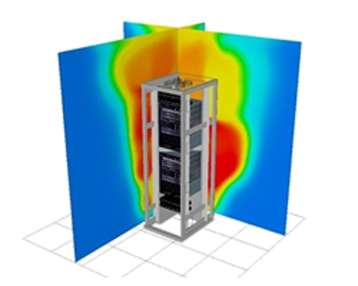It is an unfortunate inevitability that over time, the efficiency of infrastructure networks will gradually erode. This can be due to a wide range of factors such as technological advancements, introduction of new hardware to the data center environment or even updates to data legislation that require changes to the setup. But once a data center has been altered from the initial state in which it was designed to operate, a certain degree of efficiency will always be lost.
Of course, most facilities managers and business decision makers understand that any facility has a finite lifecycle and must eventually be replaced in its entirety. However, there are a number of steps that data center operators can take to optimize performance in the intervening period between construction and the DC’s ultimate demise.
A popular option is to undertake a consolidation project. According to the Data Centre Alliance, 62% of data centers are going through consolidation efforts at any one time. This can involve integrating physical DC locations, as well as optimizing hardware platforms hosting software.
Considering consolidation?
Consolidation is appealing for a number of reasons. Firstly, the process can reduce costs by improving energy efficiency. It can also allow for compliance and security adherence without the need to purchase additional storage space. Or alternatively, it can help an organization to diversify its infrastructure by outsourcing much of its storage requirements to an external colocation provider, whilst retaining a limited on-premise storage option for mission-critical information.
Given the variety of reasons to undertake a consolidation project, the process for execution is both complex and unique to each organization and its goals. Issues such as placement of incoming hardware, power, space and cooling demands, and resilience to failure all raise questions that must be answered by project managers, such as:
- Do we move IT in existing cabinets or install new ones?
- How do we move from low density cabinets to high-density?
- Do we need to install containment?
- Do we need to change the set-points (airflow and temperature) to accommodate the new layout?
- Do we need to upgrade our existing cooling infrastructure?
So how can facilities managers and business decision-makers decide the best course of action in any of these circumstances? Attempting to find the optimal consolidated setup through trial and error would be prohibitively time-consuming and expensive, whilst posing a significant risk of failure.
Simplify projects with simulation
The secret to effective consolidation planning lies in obtaining visibility over the impact of any potential change to the data center environment, without exposing your business to the risk and expense of testing this in a live setting. Fortunately, data center management software powered by engineering simulation (specifically, 3D modelling) offers a safe, swift and effective alternative, without fear of adverse consequences.
For example, if the plan is to deploy several cabinets in space available within a legacy data center, simulation can be used to establish firstly whether this will this work, and if not, then how the issues can be resolved. There may be gross cooling and power available, but locally the variation may be significant enough to scupper the best laid plans.
Alternatively, if the power delivery is accomplished with the right circuits, it then becomes a question delivering the right amount of air to the cabinets. And if both local power and cooling are available, then a factor such as a weight limit may be a barrier to deploying a group of cabinets in a particular area or zone. Getting decisions like these right the first time around is extremely difficult, and without simulation, there is simply no way to tell.
Avoid timescale tribulations
Another advantage of simulation is that it allows consolidation projects to be completed to a tight deadline, without the need to compromise on capacity. All too often, companies take shortcuts in their operational planning in order to meet deadlines, which means they are selling themselves short both financially and in terms of performance.
Using simulation, this need not be the case. Optimizing speed, power and weight compliance across a singular platform can bring project times down from days or weeks to hours, removing the need to choose between capacity and timescale. So, for effective consolidation, simulation offers a solid choice.
Jon Leppard is director at Future Facilities, a software company dedicated to improving the way data centers are designed and operated



